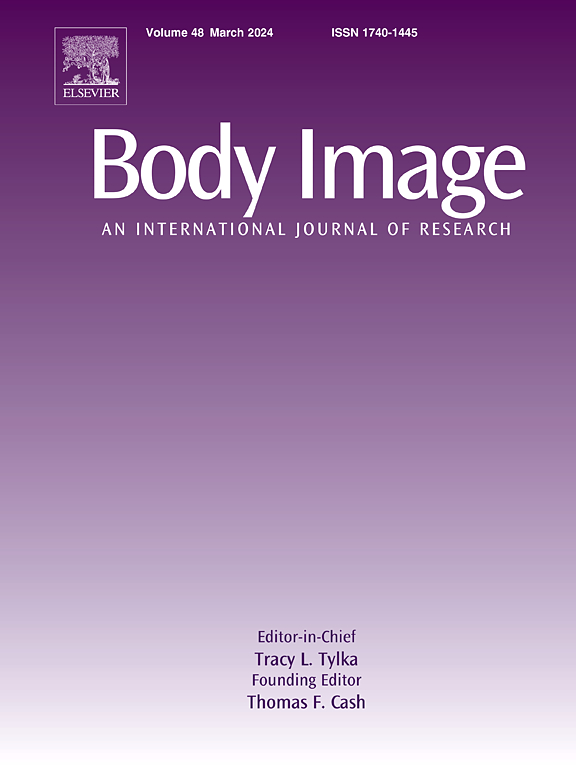葡萄牙语版青少年积极身体形象量表的心理测量特征
IF 5.4
1区 心理学
Q1 PSYCHIATRY
引用次数: 0
摘要
积极的身体形象被概念化为一个多维结构。青少年积极身体形象量表(PBIAS)Maes et al., 2021)是第一个在单一测量中评估积极身体形象的不同维度的工具。为了扩大其在国际上的应用,我们研究了PBIAS的葡萄牙语翻译的因素结构和心理测量特性。参与者(N = 664)为13至18岁的青少年。验证性因子分析验证了量表的四因子结构。多组验证性因子分析表明,量表在不同性别之间是不变的。支持内部一致性可靠性。进一步分析发现,与自尊、生活质量和功能欣赏呈正相关,与瘦理想内化和媒体压力负相关,从而支持趋同效度。此外,还证明了增量效度。结果表明PBIAS适用于葡萄牙青少年积极身体形象的综合评价。本文章由计算机程序翻译,如有差异,请以英文原文为准。
Psychometric properties of the Portuguese version of the Positive Body Image among Adolescents Scale
Positive body image is conceptualized as a multidimensional construct. The Positive Body Image among Adolescents Scale (PBIAS; Maes et al., 2021) is the first instrument to assess different dimensions of positive body image in a single measure. To extend its use internationally, we examined the factor structure and psychometric properties of a Portuguese translation of the PBIAS. Participants (N = 664) were adolescents aged from 13 to 18 years. Confirmatory factor analyses validated the four-factor structure of the scale. Multi-group confirmatory factor analyses indicated that the scale was invariant across gender. Internal consistency reliability was supported. Further analyses identified positive associations with self-esteem, quality of life and functionality appreciation, and negative associations with the internalization of thin ideals and media pressure, thus supporting convergent validity. Additionally, incremental validity was demonstrated. Results provide good evidence that the PBIAS is suitable for comprehensive assessment of positive body image in Portuguese adolescents.
求助全文
通过发布文献求助,成功后即可免费获取论文全文。
去求助
来源期刊

Body Image
Multiple-
CiteScore
8.70
自引率
28.80%
发文量
174
期刊介绍:
Body Image is an international, peer-reviewed journal that publishes high-quality, scientific articles on body image and human physical appearance. Body Image is a multi-faceted concept that refers to persons perceptions and attitudes about their own body, particularly but not exclusively its appearance. The journal invites contributions from a broad range of disciplines-psychological science, other social and behavioral sciences, and medical and health sciences. The journal publishes original research articles, brief research reports, theoretical and review papers, and science-based practitioner reports of interest. Dissertation abstracts are also published online, and the journal gives an annual award for the best doctoral dissertation in this field.
 求助内容:
求助内容: 应助结果提醒方式:
应助结果提醒方式:


